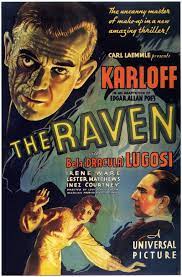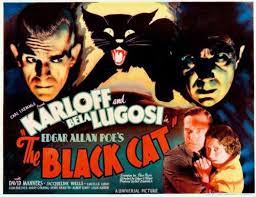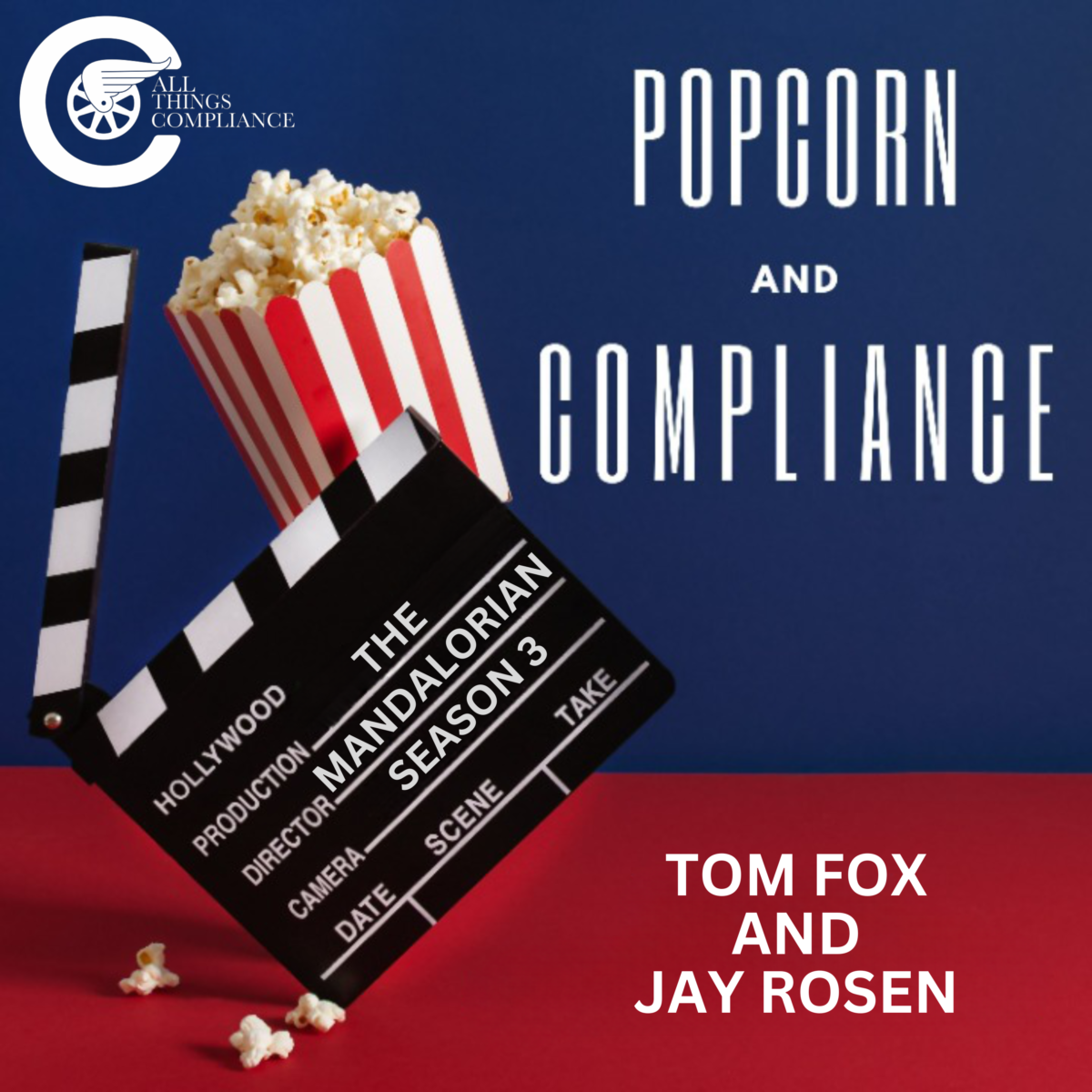Tom Fox and Jay Rosen are back with a special summer season of Popcorn and Compliance. In this special series, Tom and Jay will review the Mandalorian, Season 3. Get ready for a ton of fun, insights and all things Grogu and Mandalorian. So, buckle up and get ready for an exhilarating journey!
“The Convert,” the third episode of The Mandalorian’s third season, takes viewers on a captivating journey through a dystopian world and introduces intriguing new characters. With futuristic visuals akin to Ridley Scott’s style, the episode focuses on the plight of Dr. Pershing, a doctor forced to continue his cloning experiments. Themes of liberation and hope shine through as characters navigate a challenging environment, but it becomes evident that Dr. Pershing’s fate is not a favorable one.
Tom and Jay explore the complexities of the New Republic, questioning its true nature compared to the Empire. Former Imperial soldiers and scientists add depth to the narrative, and the origins of the First Republic are explored, filling in a plot hole in the Star Wars movie universe. Engaging conversations between Tom Fox and Jay Rosen delve into the larger Star Wars universe, discussing the New Republic’s incomplete dismantling of the Empire’s structures and the introduction of a character named Ilya Kane, who may have hidden motives.
In another episode, redemption and the significance of the mythosaur symbol in Mandalorian culture are revealed, while conversations between Tom and Jay explore the religious cult of Mandalore and its role in preserving cultural identity and providing solace in times of displacement.
Key Highlights
1. Setting the Stage: The New Republic’s Imperfections. One of the intriguing aspects of this episode is how it sheds light on the aftermath of the former Empire. The New Republic may have declared victory, but it becomes evident that not all remnants of the Empire have been eliminated. Physical remnants like starships and weapons still exist, and not everyone who was part of the former Empire is a model citizen. This serves as a reminder that declaring victory is not enough; true change requires a comprehensive approach.
2. Origins Unveiled: The First Republic and Cloning Conundrums. For fans who have been following the series closely, this episode provides long-awaited answers about the origins of the First Republic, connecting the dots and filling in story gaps. Cloning takes center stage, introducing us to the enigmatic character, Aliyah Kane. But beware, things may not be as they seem with her, leaving us on the edge of our seats, wondering what lies ahead.
3. Plot Holes and Surprising Twists: A Retrospective Appreciation. At first glance, this episode may have seemed to include some tropes, but upon further reflection, it becomes clear that they were skillfully woven into the narrative. The plot holes in the Star Wars movie universe, particularly regarding the First Republic’s origin, are addressed, providing a satisfying explanation. This attention to detail and commitment to the canon keeps the story moving forward while allowing viewers to delve deeper into the characters’ lives.
4. The Mandalorian Tradition and the Religious Cult of Mandalore. Our conversation wouldn’t be complete without discussing the portrayal of the religious cult of Mandalore. Tom draws a fascinating parallel, suggesting that the religion of Mandalore is an integral part of the Mandalorian tradition, kept alive even during exile. Jay expresses his confusion about the origins and purpose of this religious cult, prompting Tom to explain that during times of exile, people cling to their faith, hoping to fully practice it upon their return. This exploration adds depth to the Mandalorian universe and leaves us eager to learn more about this intriguing aspect.
5. Conflict and Resolution: A Perfect Setup.As the episode draws to a close, conflict and resolution are masterfully set up for the rest of the series. Characters like DinDarjin, Grogu, and Bo-Katan are left behind as our protagonists move towards the New Republic. Tom raises thought-provoking questions, comparing the New Republic to George Orwell’s 1984 and questioning its goodness. The visually impressive planet they visit, complete with a holographic zoo, serves as a backdrop for the reintegration of former Imperial soldiers and scientists who have been re-educated and pardoned. However, the portrayal of the scientist, Dr. Pershing, as smart but dumb, adds an intriguing layer to the story.
6. Looking Ahead: The Foundling and Beyond. Our conversation wouldn’t be complete without a sneak peek into the upcoming fourth episode of season three, titled “The Foundling.” As we eagerly await its release, we can’t help but speculate on the mysteries it holds and the revelations it will bring. Will we finally uncover the truth behind the Mandalorian religion? Only time will tell!
In this episode, we were treated to a dystopian science fiction experience filled with plot twists, character development, and intriguing revelations. The exploration of cloning, the portrayal of the religious cult of Mandalore, and the setup of conflict and resolution for the rest of the series left us yearning for more. As we eagerly anticipate the next episode, we can’t help but appreciate the attention to detail, the filling of plot holes, and the seamless progression of the story. So, fellow fans, stay tuned, and may the force be with you until our next adventure together!
This is The Way!










